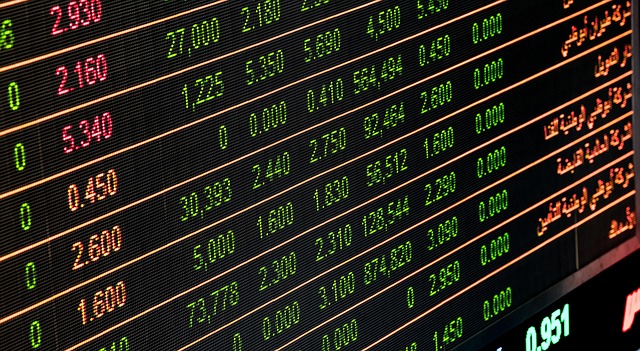The world of Forex trading, also known as foreign exchange trading, is vast, dynamic, and offers immense opportunities for individuals and institutions to profit from currency fluctuations. As one of the largest financial markets globally, the Forex market operates 24/5, providing unparalleled liquidity and accessibility. In this detailed guide, we aim to unravel the complexities of Forex trading, empowering you with the knowledge to succeed in this competitive arena.
What is Forex Trading?
Forex trading involves the exchange of one currency for another, capitalizing on fluctuations in currency values. Participants include central banks, financial institutions, corporations, and individual traders. The market operates in currency pairs, such as EUR/USD (Euro/US Dollar) or GBP/JPY (British Pound/Japanese Yen), where the value of one currency is quoted against another.
The Forex market stands out due to its sheer size, with daily trading volumes exceeding $6 trillion, offering ample opportunities for traders to find profitable setups.
How Forex Trading Works
Currency Pairs and Quotes
In Forex trading, currencies are traded in pairs. Each pair consists of a base currency and a quote currency. For example, in the EUR/USD pair:
- EUR (Euro): Base currency
- USD (US Dollar): Quote currency
The quoted price reflects how much of the quote currency is needed to buy one unit of the base currency. If EUR/USD is trading at 1.1000, it means 1 Euro equals 1.10 US Dollars.
Bid and Ask Prices
- Bid Price: The price at which traders can sell the base currency.
- Ask Price: The price at which traders can buy the base currency.
The difference between these prices is the spread, which represents the broker’s profit.
Key Features of the Forex Market
1. High Liquidity
The Forex market’s massive daily trading volume ensures high liquidity, enabling traders to enter and exit positions quickly, even with significant amounts of capital.
2. Accessibility
Unlike traditional stock markets, Forex trading is accessible to anyone with an internet connection and a trading account. Many brokers offer demo accounts for beginners to practice before investing real money.
3. Leverage Opportunities
Forex brokers provide leverage, allowing traders to control larger positions with a relatively small investment. For instance, a leverage ratio of 100:1 means you can control $100,000 with just $1,000 of margin.
Major Forex Trading Strategies
1. Scalping
Scalping involves making multiple small trades within short timeframes, aiming to capture minor price movements. This strategy requires:
- Fast decision-making
- Low spreads
- A robust trading platform
2. Day Trading
Day trading focuses on opening and closing trades within the same trading day. Traders avoid overnight positions, reducing the risk of adverse price gaps.
3. Swing Trading
Swing traders hold positions for days or weeks, aiming to profit from medium-term price trends. This strategy suits traders who cannot monitor the markets constantly.
4. Position Trading
Position traders adopt a long-term approach, holding trades for months or even years. They base decisions on macroeconomic trends and fundamental analysis.
Fundamental Analysis in Forex
Economic Indicators
Fundamental analysis involves evaluating economic indicators that impact currency values, such as:
- Interest Rates: Higher interest rates attract foreign investment, boosting currency value.
- Inflation: Low inflation typically strengthens a currency’s purchasing power.
- GDP Growth: Strong economic growth signals a robust currency.
- Employment Data: High employment levels often correlate with economic strength.
Geopolitical Events
Political stability and geopolitical events significantly influence currency markets. Traders must stay informed about global developments to anticipate market movements effectively.
Technical Analysis in Forex
Technical analysis involves studying price charts and patterns to predict future price movements. Popular tools and indicators include:
1. Moving Averages
Moving averages smooth out price data, helping traders identify trends. Common types are:
- Simple Moving Average (SMA)
- Exponential Moving Average (EMA)
2. Relative Strength Index (RSI)
The RSI measures the speed and change of price movements, indicating overbought or oversold conditions.
3. Fibonacci Retracement
This tool helps identify potential reversal levels by measuring the retracement of a price trend.
4. Candlestick Patterns
Candlestick patterns, such as Doji, Hammer, and Engulfing patterns, provide insights into market sentiment and potential reversals.
Risk Management in Forex Trading
1. Set Stop-Loss Orders
Stop-loss orders automatically close a trade at a predefined price, limiting potential losses.
2. Diversify Trades
Avoid putting all your capital into a single trade or currency pair. Diversification reduces overall risk.
3. Use Proper Position Sizing
Determine the appropriate trade size based on your account balance and risk tolerance, typically risking no more than 1-2% of your capital per trade.
Choosing the Right Forex Broker
Selecting a reliable broker is crucial for successful trading. Consider the following factors:
- Regulation: Ensure the broker is regulated by reputable authorities like the FCA, ASIC, or CySEC.
- Trading Platform: Look for user-friendly platforms with advanced charting tools.
- Spreads and Fees: Compare spreads and commission rates to minimize trading costs.
- Customer Support: Reliable customer support is essential for resolving issues promptly.
Common Mistakes to Avoid
1. Overtrading
Trading excessively can lead to impulsive decisions and increased losses. Stick to your trading plan and avoid emotional trading.
2. Ignoring Risk Management
Failing to manage risk properly can quickly deplete your trading capital. Always use stop-loss orders and diversify your portfolio.
3. Lack of Education
Forex trading requires continuous learning. Stay updated on market trends, strategies, and economic developments.
Conclusion
Forex trading offers immense potential for profit, but success requires knowledge, discipline, and a well-thought-out strategy. By understanding the fundamentals, mastering technical and fundamental analysis, and implementing effective risk management, traders can navigate the currency markets with confidence.

